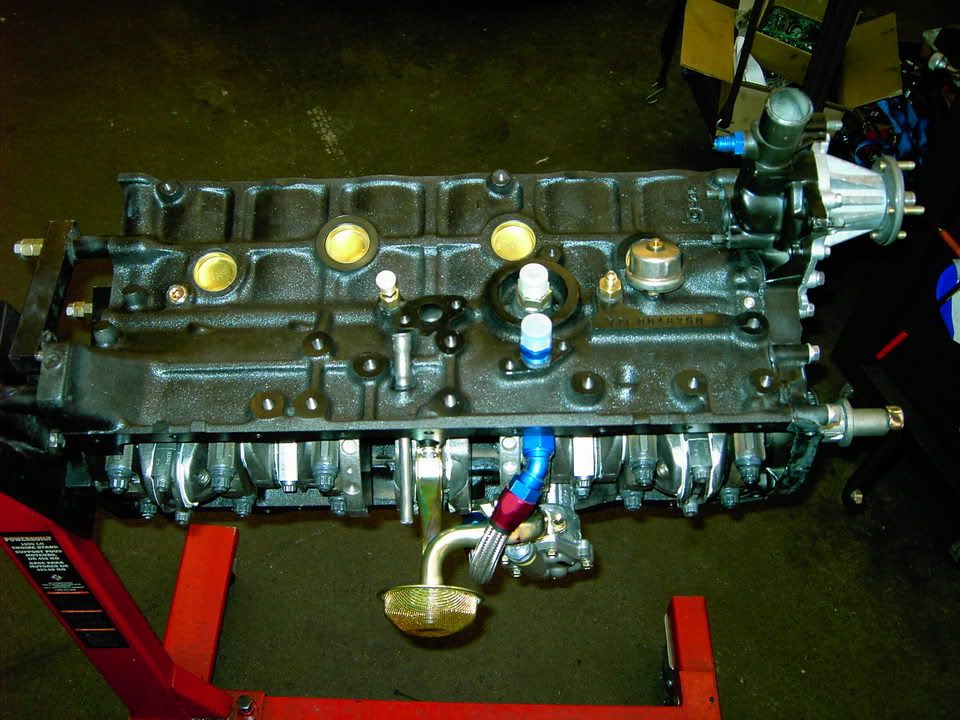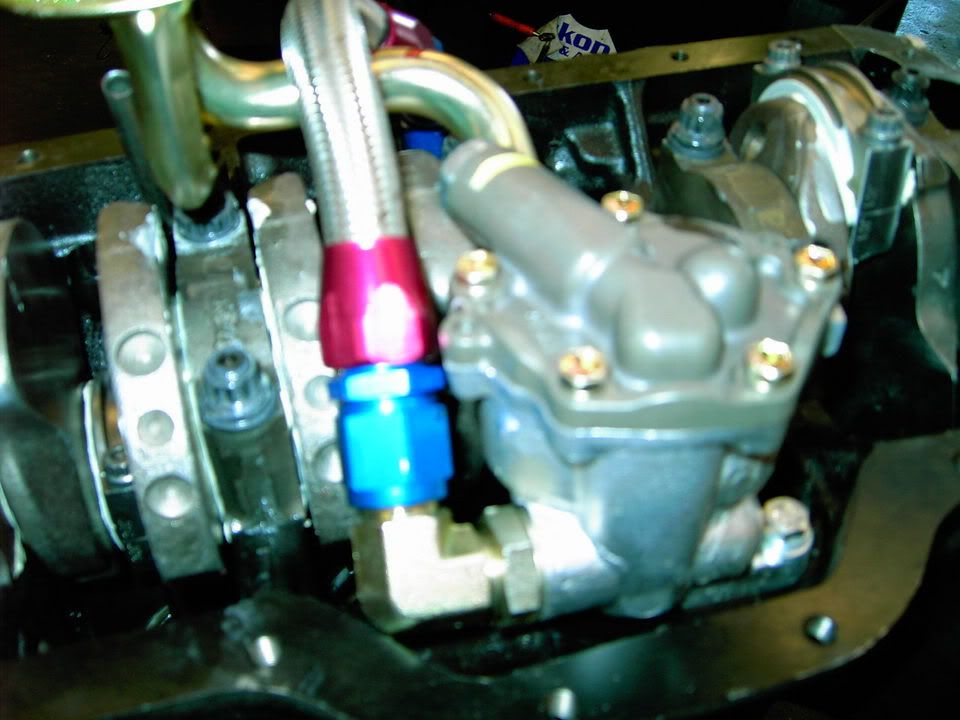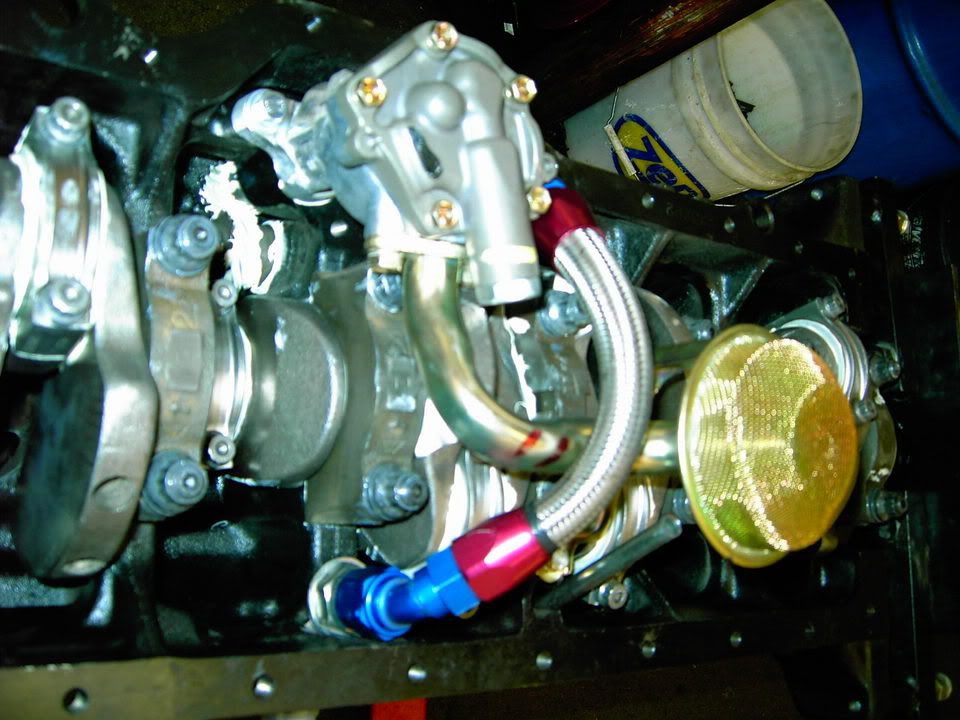Along with what IJ posted, here are some things to do with your oil system if your rebuilding your 7M
If your NA, get the GTE pump. (It has taller gears, so it pumps more oil for every turn, and that extra volume adds up to more pressure all things being equal.)
For the turbo motors, clean your squirter's and make sure none are stuck. They bypass at about 10psi from what I can tell, there is a small spring and ball...
Clean out all your oil passeges in the crank. (This requires you pull and replace the plugs in the crank.. but you will be amazed at what crap is trapped next to those plugs, and would be soon in your bearings if you did not clean it out.)
Shim your oil pump bypass with a 10mm nut. You can add one or two washers too if you want, but the nut works just fine. I have a nut and two washers, and tight bearings, so my oil pressure is nice and high, just where I want it. (Besides, I have some other mods to help with flow too.

)
Ok, if you must keep the stock oil cooler, shim it out with TWO nuts, or a nut and 4 washers.This should push your stock bypass pressure up to the 50psi or better range, and keep the oil in your engine where it can do the most good. (I highly reccomend going with a remote depth filter, cooler and thermostat if you can possibly spare the cash.)
Stock restrictions you need to consider.
#1. The banjo bolt at the cross over tube to pump. (You can get around this, but it takes some work and SS AN8 fittings/line etc.) Mine is upgraded to AN10, but that takes a mill and even more work.
#2. The small hole that feeds your oil filter mount. (And the GTE filter adapter/cooler.) This hole restricts flow, and you can get around it, but it takes some custom tools and a plug. Also your going to be going remote filter/cooler this way since the oil comes out the hole intended for the GE oil cooler bypass when your done. Good news is you don't need an adapter, but you do need a 20mm thread tap. (Same thread as the oil galley, and you have that filter mount "nut" as a reference if your going out to buy the right tap.) If I was going to do mine again, I'd use two BSP 20mm to AN10 fittings, and call it good. My "out" fitting is a 1/2" NPT pipe, and that compression fitting puts stress on the cast iron block. Not good if you over tighten and crack your block.
Basicly, when your done with these two mods, your system is either AN8 from the pump to the galley, or AN10 if you go my route.
Either one flows much more oil all the time to the bearings, and you see that as increased pressure on your gauge. (The bearings just see oil pressure all the time, and that's a good thing IMHO.)
This is what the in and out fittings look like when your done. (Note the blue AN10 is the OUT, and the gold BSP/AN10 is right in the stock oil galley feed hole.)
This is the pump mods. You can do this with a AN8 BSP fitting, and use AN8 line to increase the flow v/s the banjo fitting.
I cracked my block using a 1/2" NPT AN10 fitting, then had to take apart the entire engine, mount up the block in the mill and machine a new pad for a BSP 20mm fitting the second time around. (IF You go this route, please use the BSP type fittings the first time as they are less likely to crack your block.)
If you look just under the AN10 45 degree fitting, there is a BSP 20/AN10, and in that hole, is a plug in the stock small drilled passege that goes up to your stock oil filter feed. To plug it, you need a plug tap welded to a rod so you can get the tap down into the hole to tap it for the plug. (not too hard, but you end up with a plug tap on a 10" long shaft that you might not ever use again, of course you could cut off the shaft if you don't like it laying in your tool box...) Note that the stock engine block is about 1.5 inches higher, the material I machined off that cracked due to the compression AN10 fitting I used the first time around.



